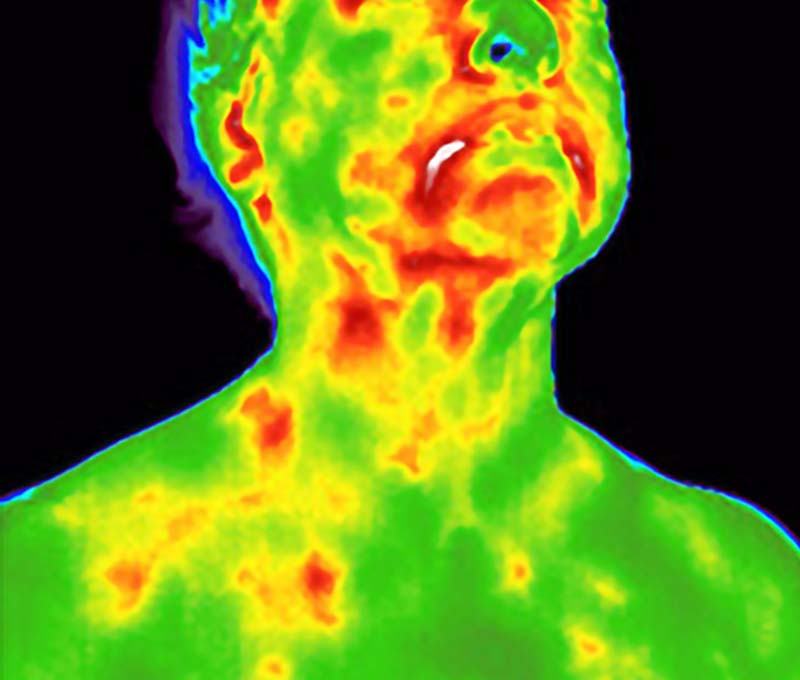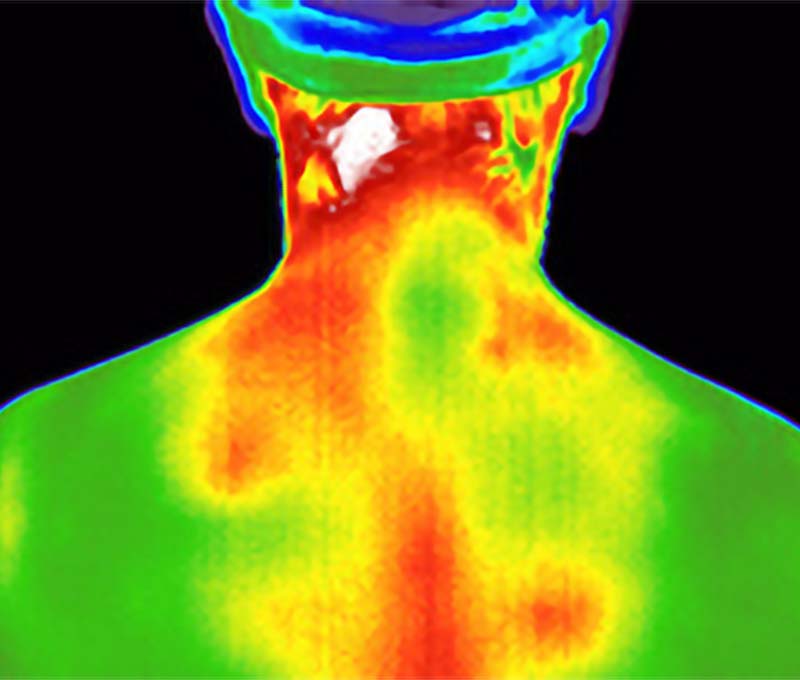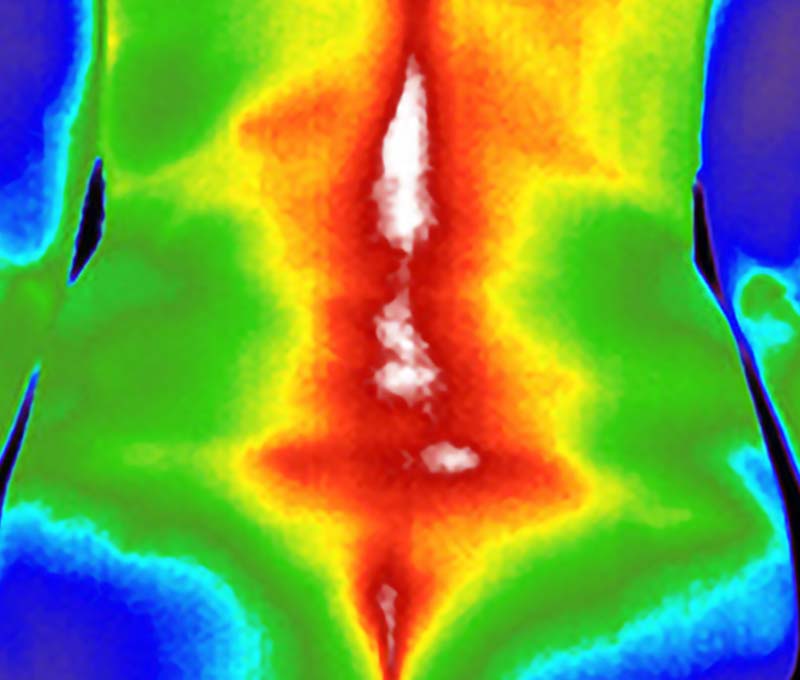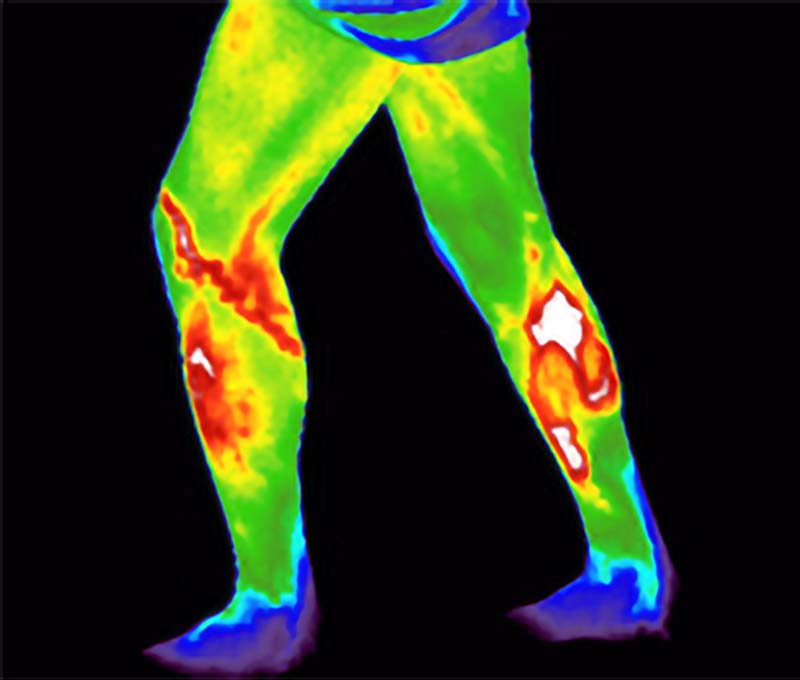Why Thermography? A life-changing device
This thermal imaging tool could be life -changing when analyizing health conditions early.
Thermography is used to measure body temperature as it relates to health conditions. This thermal imaging tool creates a digital map of your body that illustrates heat patterns, which may indicate some condition or abnormality. It uses a scanning-type infrared camera that measures your body surface temperature, presenting the information as a digitized image.
How can you use it to improve your health?
Even if thermography doesn’t replace mammograms or MRIs, it can be a useful screening tool for some parts of your body—such as your thyroid gland, which sometimes has trouble lighting up on an MRI because of its location under your throat and its tendency to overproduce in people with Grave’s disease. The thyroid gland produces hormones that regulate our metabolism, but too much can result in an increased rate of calories being burned, thus preventing weight loss. A simple thermogram may reveal areas of concern that you wouldn’t otherwise know about. And who knows? Thermography may even become more common than mammograms one day, especially since women have been advised to begin getting breast cancer screenings at age 40 instead of 50.
4 Practical ways thermography can be used,
- In addition to finding cancer (when used in combination with MRI and ultrasound), thermography can be used for a number of other purposes, including tracking certain degenerative diseases such as Alzheimer’s, multiple sclerosis, and more.
- It may also be used to evaluate liver function, find heart disease and identify possible infections.
- Thermography may also be able to find tumors before they are visible on an x-ray or ultrasound scan.
- Thermography may have applications in dentistry, physical therapy, and sports medicine.
Steps to using thermography
Now, using thermography is not a replacement for mammograms or any other method of cancer discovery. But it can be a good addition to an overall breast care plan and routine and may be more reliable in discovering hard-to-find cancers in dense breasts, like triple-negative cancers, according to Anoush Milani, M.D., surgical oncologist at Mount Sinai Medical Center and director of breast imaging services at Continuum Cancer Centers of New York City. So how do you know if you should get a thermogram? Here are three questions that will help you decide:
1. Do I have symptoms that worry me?
2. Am I over 40 years old?
3. Do I have dense breasts (more than 100 grams per cubic centimeter)?
If you answered yes to all three questions, a thermogram may be right for you—and your healthcare provider can tell you what to expect from your exam and offer advice about follow-up tests based on results.
Why you need a good thermographer
The American Association of Clinical Endocrinologists (AACE) recommends thermography for patients with thyroid and pituitary diseases, as well as for men with low testosterone. The AACE says some healthy people may benefit from using thermography to monitor their chronic pain and immune response disorders. And if you’re trying to conceive a baby, it can help you identify issues that might be causing infertility. For example, it might reveal infection or inflammation in your reproductive organs or a cyst on your ovaries. In fact, fertility experts often recommend thermography as one of several diagnostic tools used in conjunction with traditional methods such as ultrasound and blood work—especially when trying to get pregnant later in life or after suffering a miscarriage.
What is Thermographic Breast Imaging (TBI)?
Thermographic breast imaging, or TBI, uses an infrared camera to produce a digitized image of your breast tissue. A mammogram and TBI can detect abnormalities in different ways, which may mean that doctors can catch cancer earlier using both tools together as a comprehensive approach to women’s healthcare.
Early thermal changes can be found with thermography and is an area in which thermography excels. For instance, let’s take heart disease prevention.
And here are some other examples:
- Arthritis: Thermography can help you identify early signs of arthritis — and differentiate between osteoarthritis and more severe forms like rheumatoid. Effective early treatment strategies can then be implemented before you experience further degeneration.
- Neck and Back Pain: Thermal pain patterns ‘light up’ white and red hot on a scan in the involved area. You can get relief faster and begin restorative care that more precisely targets the correct area.
- Dental Issues: If you have TMJ, gum disease, or an infected tooth, this will show up on a thermal scan as white or red hot.
- Sinus Issues & Headaches: Significant heat in your forehead or sinus region revealed on a thermal scan is an indicator that these systems in your body are not functioning properly.
- Immune Dysfunction, Fibromyalgia, and Chronic Fatigue: The immune system correlates to the T1 and T2 areas of your spine — high levels of heat in that region can indicate immune dysfunction. On the other hand, chronic fatigue, fibromyalgia, and aching joints are just a few complaints that correlate to cool patterns seen in this area.
- Carpal Tunnel Syndrome (CTS): This condition is often misdiagnosed. For instance, you may think you have CTS, yet the scan shows your neck is referring to pain from a different affected area. This will help you get the most appropriate treatment.
- Digestive Disorders: Irritable bowel syndrome, diverticulitis, and Crohn’s disease are often visible with thermography. If you’re able to address these conditions early on, you’ll find that health restoration is much more likely.
- Other Conditions: Including bursitis, herniated discs, ligament or muscle tear, lupus, nerve problems, whiplash, stroke screening, cancer, and many, many others.





| Carotid Artery Inflammation | Severe Digestive Pain | Abdomen Inflammation | Food Allergies | Lower Back Dysfunction |
Thermography screenings can assess heart function and find thermal changes in the carotid arteries (which may be a precursor to stroke and blood clots). When inflammation and/or occlusion of the carotid is visible, your doctor may do additional testing. Earlier findings of a heart problem may save your life.
With all the great benefits of thermography, it may sound complicated — but it’s not!
Here are the simple steps you’ll follow when you get a thermogram:
Step 1: You sit in a temperature-controlled room to allow your body to cool from any external conditions. At that time, you’ll complete some simple paperwork, including a health survey.
Step 2: You’re positioned in front of a Thermal Imaging Camera, dressed down in a robe and the technician takes digital pictures. You will be able to see yourself “live” on the computer screen, which can help give you a better understanding of your body.
Step 3: Your pictures are sent out to board-certified MD physicians for analysis of 1) the amount of heat and 2) the symmetry of the heat patterns. Heat patterns may indicate inflammation, infection, or a variance from your body’s normal temperature.
Step 4: You’ll receive a report of findings in your mail shortly thereafter. This will help you and your doctor determine any next steps.
Step 5: We recommend you return for thermograms annually to monitor your health and watch for changes. Since everybody’s body is different, the best way to identify problems is to measure changes in your own body’s normal temperature.
What are the benefits of getting tested by thermography vs. other methods like ultrasound, MRI, CT scan?
Thermography provides instant feedback with no radiation and little to no invasiveness, saving time and money in patient care. Another benefit to using thermography for breast screenings is that it can save women from going through a painful mammogram, where breasts are compressed between two plates during an x-ray scan. Although mammograms have been proven effective at detecting breast cancer, many women dread them because of their painful nature.
For Information or perhaps you are interested in making an appointment, please don’t hesitate to contact us.
I am here to help assist you in living your best life…
Artis Callaham

0 Comments